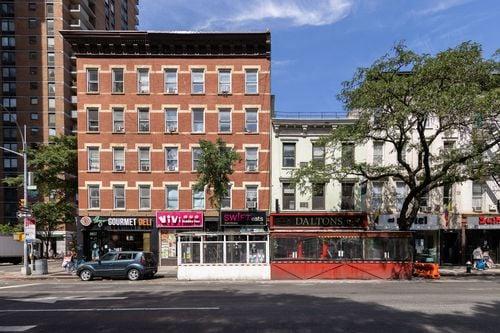A small slice of pavement is sparking a turf war in US cities. Street curbs, often overlooked, are actually some of the most valuable and busy real estate in urban areas. With a multitude of users and uses competing for limited space, cities are now exploring ways to make curbs more efficient and accessible for everyone. By removing free parking and charging for spots based on demand, cities aim to unlock the true potential of curb space. Join us as we delve into this fascinating topic and explore the innovative solutions being implemented across the country.
The Problem with Free Parking
Explore the issues caused by free on-street parking and its impact on cities.
Free on-street parking may seem like a convenient perk, but it has led to a multitude of problems in our cities. The allocation of valuable curb space to free parking primarily benefits car owners, leaving other users and uses competing for limited space. This has resulted in traffic congestion, air pollution, and wasted time as drivers search for parking spots.
Studies have shown that delivery drivers spend more than an hour each day looking for parking, causing delays and frustration. Additionally, cars parked in prohibited areas such as fire hydrants and bus stops pose safety hazards. It's clear that the current system is not working efficiently for everyone.
Demand-Based Parking: A Solution for Efficiency
Discover how cities are implementing demand-based pricing to optimize curb space and reduce congestion.
Many cities have recognized the need for change and are implementing demand-based pricing for on-street parking. By adjusting parking rates based on demand, cities can better manage curb space and ensure that parking is available when and where it's needed most.
For example, Seattle has successfully implemented demand-based pricing, with rates ranging from 50 cents to $5 per hour depending on location and time of day. This approach aims to achieve a goal of one-to-two free spaces available per block, reducing congestion and making parking more accessible for visitors and shoppers.
By prioritizing the efficient use of curb space, demand-based parking not only reduces traffic and pollution but also generates revenue for cities. This revenue can be reinvested in improving transportation infrastructure and supporting alternative modes of transportation.
Smart Loading Zones: Streamlining Deliveries
Learn how cities are utilizing technology to create efficient loading zones for delivery drivers.
Delivery drivers play a crucial role in our cities, but they often face challenges finding suitable loading and unloading spaces. To address this issue, cities like Omaha and others have implemented smart loading zones in busy areas.
These loading zones utilize technology such as apps to allow drivers to reserve available spots for loading and unloading goods. By charging based on demand, these zones ensure that spaces are efficiently utilized and available when needed.
Efficient loading zones not only reduce congestion caused by double-parked delivery trucks but also support local businesses by providing a convenient and reliable delivery option. This innovative solution benefits both drivers and the community as a whole.
Reimagining the Curb: Creating Multi-Functional Spaces
Discover how cities are transforming curbs into versatile spaces that cater to various needs.
Curbs have traditionally been reserved for parking, but cities are realizing their potential to serve a wider range of purposes. By reimagining curbs as multi-functional spaces, cities can create a more inclusive and accessible environment for all users.
For example, some cities are designating curb space for outdoor dining, allowing restaurants to expand their seating options and create vibrant sidewalk experiences. Others are prioritizing bike lanes and pedestrian crossings to promote active transportation and improve safety.
By carefully considering the needs of different users and allocating curb space accordingly, cities can create a more balanced and efficient urban environment. This approach not only enhances the quality of life for residents but also attracts visitors and boosts local economies.
Conclusion
As cities continue to grow and evolve, the efficient use of curb space becomes increasingly important. The traditional model of free parking is no longer sustainable, as it leads to congestion, wasted time, and safety hazards. By implementing demand-based pricing, creating smart loading zones, and reimagining curbs as multi-functional spaces, cities can optimize curb space and create a more accessible and efficient urban environment.
These innovative solutions not only benefit pedestrians, cyclists, and delivery drivers but also support local businesses and improve the overall quality of life in cities. By prioritizing the needs of all users and embracing technology, cities can unlock the true potential of curb space and create a more sustainable future.
FQA
How does demand-based parking work?
Demand-based parking involves adjusting parking rates based on demand. Prices rise when demand is high and drop when it falls. This approach ensures that parking is available when and where it's needed most, reducing congestion and improving efficiency.
What are the benefits of smart loading zones?
Smart loading zones utilize technology to create efficient spaces for delivery drivers. By allowing drivers to reserve spots and charging based on demand, these zones streamline deliveries, reduce double-parking, and support local businesses.
Why is it important to reimagine curbs as multi-functional spaces?
Reimagining curbs as multi-functional spaces allows cities to cater to the diverse needs of their residents and visitors. By designating space for outdoor dining, bike lanes, and pedestrian crossings, cities can create a more inclusive and vibrant urban environment.

